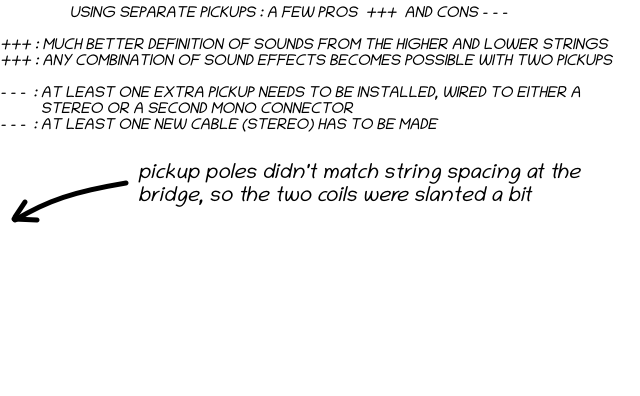|
|
|
| |
|
|
EXplaining EXtended range guitars (e.r.g.'s), EXamples and EXperiments.Started making my first e.r.g. in 1993, a seven-string chambered solid-body baritone guitar, which was completed a few years later with two matching home-made pickups. Eventually played it once more on the "Old McDonald had a phaser" demo. With the exception of a traditionally made violin, featured in "La Cucaracha", all building activities remained focused on the e.r.g.'s since then.
Musically speaking, an extended range could be defined as the one containing more notes than
By increasing the number of strings on the guitar, its range may be extended along with
How is all of this still relevant to contemporary musicians in today's musical environment ? prefer might help as a starting point to answer questions like these for yourself, especially by keeping things simple, like in the following short musical example: Background accompaniment performed on the described seven-string e.r.g. with chords and bass parts played simultaneously (trackmix 1), while being an attempt to respect both the original melody and the quality of the traditional song "Down by the riverside". Three different sounding melody and lead parts were all played on the fretless guitar (trackmix 2), which also helped to get a more flowing watery sound effect during the last part. Using separate pickups for the higher and lower stringsInstead of altering the existing pickup configuration on the 7-string mentioned above, a second bodywas actually used along with the 7-string neck to carry out experiments with two separate pickups. On the Greensleeves / When the Saints go marching in demo, chords and basslines were played at the same time on the baritone guitar parts, with an octaver pedal added for the bass strings. Although newer octaver pedal versions allow doing so with just a single pickup, the delay and panning effects on the chords during the third part (00.39 - 00.57) still require the use of two separate ones.
|



